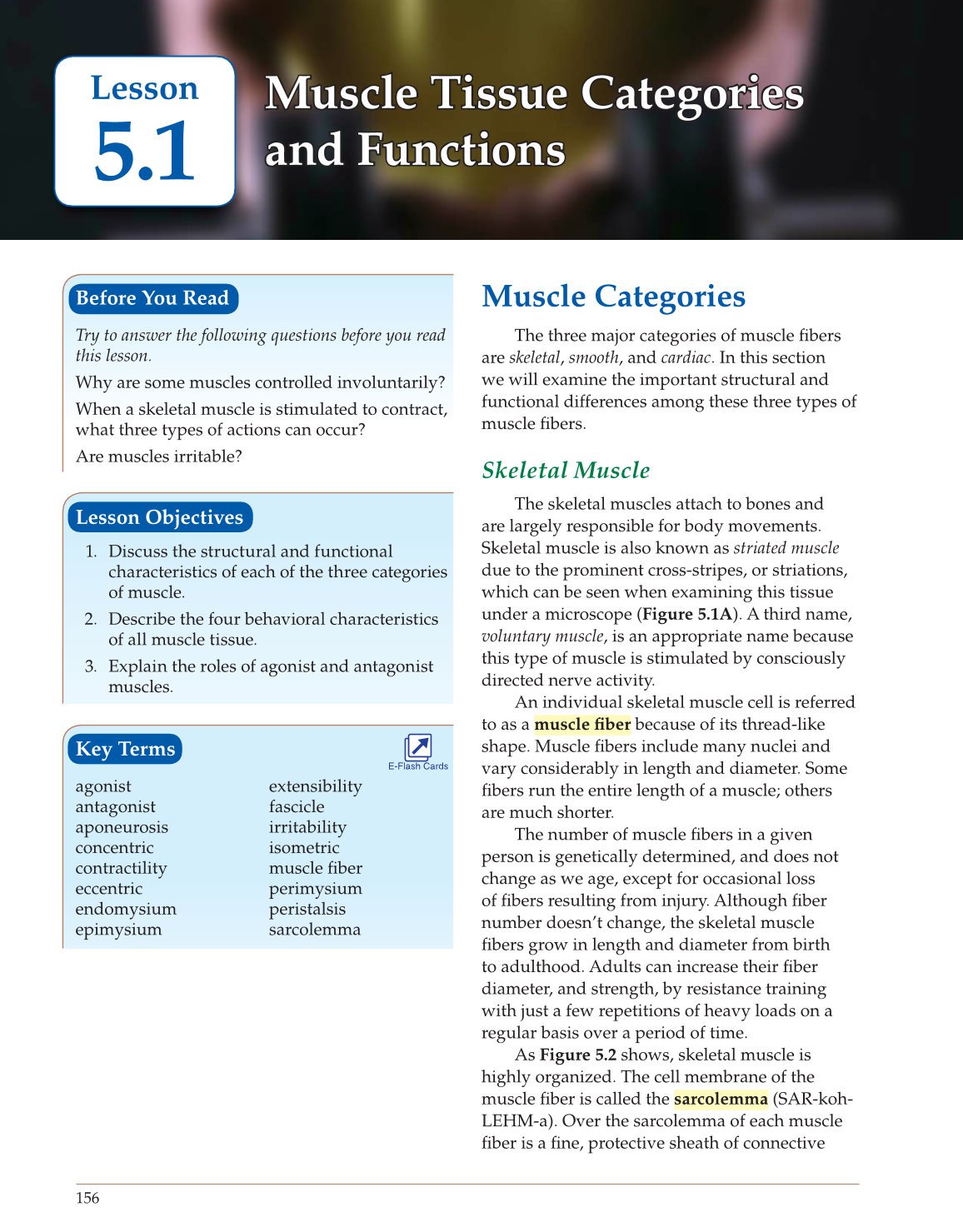156
Lesson
5.1
Muscle Tissue Categories Muscle Tissue Categories
and and FunctionsFunctions
Before You Read
Try to answer the following questions before you read
this lesson.
Why are some muscles controlled involuntarily?
When a skeletal muscle is stimulated to contract,
what three types of actions can occur?
Are muscles irritable?
Lesson Objectives
1. Discuss the structural and functional
characteristics of each of the three categories
of muscle.
2. Describe the four behavioral characteristics
of all muscle tissue.
3. Explain the roles of agonist and antagonist
muscles.
Key Terms
agonist
antagonist
aponeurosis
concentric
contractility
eccentric
endomysium
epimysium
extensibility
fascicle
irritability
isometric
muscle fi ber
perimysium
peristalsis
sarcolemma
Muscle Categories
The three major categories of muscle fi bers
are skeletal, smooth, and cardiac. In this section
we will examine the important structural and
functional differences among these three types of
muscle fi bers.
Skeletal Muscle
The skeletal muscles attach to bones and
are largely responsible for body movements.
Skeletal muscle is also known as striated muscle
due to the prominent cross-stripes, or striations,
which can be seen when examining this tissue
under a microscope (Figure 5.1A). A third name,
voluntary muscle, is an appropriate name because
this type of muscle is stimulated by consciously
directed nerve activity.
An individual skeletal muscle cell is referred
to as a muscle fi ber because of its thread-like
shape. Muscle fi bers include many nuclei and
vary considerably in length and diameter. Some
fi bers run the entire length of a muscle; others
are much shorter.
The number of muscle fi bers in a given
person is genetically determined, and does not
change as we age, except for occasional loss
of fi bers resulting from injury. Although fi ber
number doesn’t change, the skeletal muscle
fi bers grow in length and diameter from birth
to adulthood. Adults can increase their fi ber
diameter, and strength, by resistance training
with just a few repetitions of heavy loads on a
regular basis over a period of time.
As Figure 5.2 shows, skeletal muscle is
highly organized. The cell membrane of the
muscle fi ber is called the sarcolemma (SAR-koh-
LEHM-a). Over the sarcolemma of each muscle
fi ber is a fi ne, protective sheath of connective
E-Flash Cards
